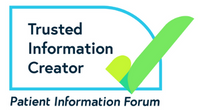Symptoms & Effects of 5q Spinal Muscular Atrophy – Type 1
Symptoms & Effects of 5q Spinal Muscular Atrophy – Type 1
This page is for families, friends and healthcare professionals who want to know more about SMA Type 1.
SMA Type 1 is a form of 5q SMA. Please see our guide: What is 5q SMA? for information about causes, diagnosis, inheritance and how many people are affected.
Before the new drugs for 5q SMA were developed, clinicians studied the effects of SMA on people. This is called the ‘natural history’ of the condition. It was different for each ‘Type’ of SMA.
Your clinician will tell you if they expect your child’s SMA to follow the ‘natural history’ of SMA Type 1 if they do not have drug treatment. They will discuss the latest clinical trial and real-world evidence for these drug treatments. They will tell you what you might expect if your child is treated.
Our guide to drug treatments > covers questions and topics that you may wish to discuss with your child’s clinical team.
In SMA Type 1, symptoms of muscle weakness usually begin between 0 and 6 months of age. In general, the earlier the onset of symptoms, the more severe the condition. Sometimes SMA can affect babies even before birth; this may be called SMA Type 0.
In the natural history of SMA Type 1, each child is affected differently but, in general, babies are:
- bright, alert and responsive
- able to smile and frown as their facial muscles are not severely affected
- often described as ‘floppy’ babies due to their low muscle tone (hypotonia) and severe muscle weakness
- unable to support or lift their head due to their weak neck muscles
- unable to sit unsupported (‘non-sitters’) and have difficulty rolling over
- able to move their hands and fingers but have difficulty lifting their arms and legs
In the natural history of SMA Type 1, children have:
- weak breathing muscles, which can cause a weak cry and difficulties with breathing and coughing
- an increased chance of chest infections, which can be life-threatening
- difficulty swallowing their saliva and other secretions, which may make them sound chesty or make them cough
- difficulties feeding and gaining weight
- an increased risk of fluids or food passing into their lungs (aspiration), which can cause choking and, sometimes, chest infections or pneumonia
Before 2007, without intervention for breathing difficulties, most children diagnosed with SMA Type 1 were expected to live for less than two years¹. The November 2017 ‘International Standards of Care for SMA’ refers to evidence that suggests that since more proactive managements were introduced in 2007, children were living longer2,3.
Most clinical trials and studies of drug treatments for SMA Type 1 have focused on their effects on motor milestones and survival. There is now better understanding that respiratory and other outcomes also matter. These include the development of:
- swallowing
- feeding and eating
- verbal communication
- muscle support of spine and hips
- fine motor skills
- fatigue levels.
Changing outcomes
In 2018, the UK started to offer disease-modifying drugs for children who have SMA Type 1. Most children with SMA Type 1 have had treatment. This has either been:
- the one-off gene therapy funded by the NHS since 2021, or
- ongoing treatment with one of the other two disease modifying drugs
See: Drug treatments for children who have 5qSMA >.
All these treatments have been life-saving. Most treated children have gained strength, movement and better health. Though many do have complex care needs4, with appropriate support, children are joining mainstream schools.
SMA does not usually affect a child’s intelligence or thinking. However, there is increasing awareness that some children with SMA Type 1 struggle with their general development, learning or understanding. This shows how important it is to spot and address concerns early. Strategies can then be put in place to support individual development and educational attainment.
How SMA will impact the health and daily life of a treated child living with SMA Type 1 today – and how the natural history of their condition may change – is very individual. It will be influenced by factors including:
- the age at which symptoms first appeared
- the severity of symptoms
- how early any treatment was started, and
- their individual response to treatment.
Though they can alleviate some symptoms, none of the drug treatments are a cure. They must be combined with the best supportive care and management of symptoms to ensure the best possible outcomes for each individual child.
Nationally and internationally expert clinicians, researchers and people living with SMA are working together to review and update guidelines for best supportive care and management of symptoms.
- See: SMA Care UK >
It is important you feel able to discuss any questions you have with your baby’s clinical team.
- Montes J et al. (2009) Clinical outcome measures in spinal muscular atrophy, J Child Neurol 24: 968-978.
- A Guide to the 2017 International Standards of Care for SMA. Available at: smauk.org.uk/international-standards-of-care-for-sma (Accessed: 12th June 2024)
- Mercuri E et al. (2018) Diagnosis and management of spinal muscular atrophy: Part 1: recommendations for diagnosis, rehabilitation, orthopedic and nutritional care. Neuromuscul Disord 28: 103-115.
- Mercuri E et al. (2020) Spinal muscular atrophy – insights and challenges in the treatment era. Nat Rev Neurol 16: 706-715.
Was this page useful?
 Version 5
Version 5
Author: SMA UK Information Production Team
Last updated: June 2025
Next full review due: June 2028
Links last checked: June 2025
This page, and its links, provide information. This is meant to support, not replace, clinical and professional care.
Find out more about how we produce our information.
